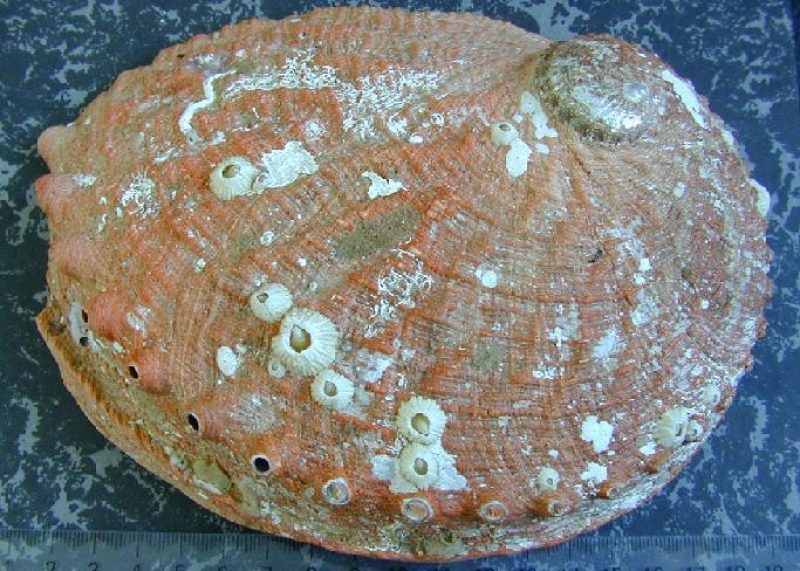Depth
Type of resources
Topics
Keywords
Contact for the resource
Provided by
Years
-
Timed GPS-tracked swims using SCUBA (45 and 30 minutes), were used to assess the changes in frequency and size of Centrostephanus rodgerii incipient barrens in eastern Tasmania. The number of C. rodgerii and Heliocidaris erythrogramma in each incipient barren were also assessed.
-
To quantify the winter diving behaviour and vertical habitat use of adult female Antarctic fur seals (Arctocephalus gazella) we tracked females using Wildlife Computers Time-Depth Recorders (TDRs). Females were captured towards the end of the lactation period (March/April) and the TDR was attached dorsally to the fur approximately 10 cm anterior to the rump using a two-part epoxy. TDRs were retrieved just prior to or after giving birth the following season. Data files were extracted from the tags using the Wildlife Computers software Instrument Helper.
-
This data is primarily benthic invertebrate community information including species abundance & distribution collected by diver coring/grab. Spatial information is available for D'Entrecasteaux Channel, Huon River, North West Bay and Port Esperance sites. Associated physical chemical parameters (sediment grain size, redox, sulphide, depth) were also collected and, in most cases, includes spatial GPS references.
-
A photographic and in situ diver survey of marked incipient Centrostephanus rodgersii barren patches, in eastern Tasmanian, was used to assess any changes in the grazed area and shape at experimental (lobster translocation/ research reserve protection sites; and abalone diver urchin cull sites) versus control sites.
-

The survey comprises two streams of data, including (1) the availability of different attachment sites and (2) the algal composition of abalone attachment sites ('homesites'). The survey was conducted at three sites at each of three regions on the east coast of Tasmania.
-
This data is primarily benthic invertebrate community information including species abundance & distribution collected by diver coring/grab. Spatial information is available for Huon Estuary and Tasman Peninsula (Nubeena) sites. Associated physical chemical parameters (sediment grain size, redox, sulphide, depth) were also collected and, in most cases, includes spatial GPS references.
-
Characterisation of lobster (Jasus edwardsii) abundance and change in abundance at three different sampling sites (Cape Paul Lemanon, North Bay and Fortescue Bay) on the south-east coast of Tasmania, was assessed by GPS tracked SCUBA diver swims of 60 minutes in length whereby GPS was logged approximately every 5 seconds. Large tagged Rock Lobsters were introduced into one of the sampling sites, North Bay (which was closed to fishing). The swims are also being used to assess the impact of reef closure on the local lobster population.
-
Collected benthic community structure (species and abundance) and physical/chemical attributes (including sediment grain size, redox, sulphide and depth) for a large number of locations in the Huon and Derwent estuaries of south east Tasmania. Data was collected using van veen grab, divers where necessary or core samples. All locations include heavy metal data and site information. Most data was collected with spatial references (GPS).
-

This project uses positional information from GPS loggers on abalone divers' boats and depth information from depth loggers attached to the divers for fine-scale spatial reporting of abalone fishing.
-
The following dataset contains particulate iron data collected during the 2018 occupation of the CLIVAR SR03 (GEOTRACES GS01) transect south of Tasmania, Australia. This data is used ancillary to measurements of dissolved iron in the same transect for a manuscript in preparation by Traill et al. (2023). While modelling efforts have furthered our understanding of marine iron biogeochemistry and its influence on carbon sequestration, observations of dissolved iron (dFe) and its relationship to physical, chemical and biological processes in the ocean are needed to both validate and inform model parameterisation. Where iron comes from, how it is transported and recycled, and where iron removal takes place, are critical mechanisms that need to be understood to assess the relationship between iron availability and primary production. To this end, hydrographic and trace metal observations across the GO-SHIP section SR3, south of Tasmania, Australia, have been analysed in tandem with the novel application of an optimum multiparameter analysis. From the trace-metal distribution south of Australia, key differences in the drivers of dFe between oceanographic zones of the Southern Ocean were identified. In the subtropical zone, the source of dFe was constrained by waters advected off the continental shelf, and by remineralization in recirculated modified mode and intermediate water masses of the Tasman Outflow. In the subantarctic zone, the seasonal replenishment of dFe in Antarctic surface and mode waters appears to be sustained by iron recycling in the underlying mode and intermediate waters. In the southern zone, the dFe distribution is likely driven by dissolution and scavenging by high concentrations of particles along the Antarctic continental shelf and slope, entrained in high salinity shelf water. This approach to trace metal analysis may prove useful in future transects for identifying key mechanisms driving marine dissolved trace metal distributions.
 IMAS Metadata Catalogue
IMAS Metadata Catalogue